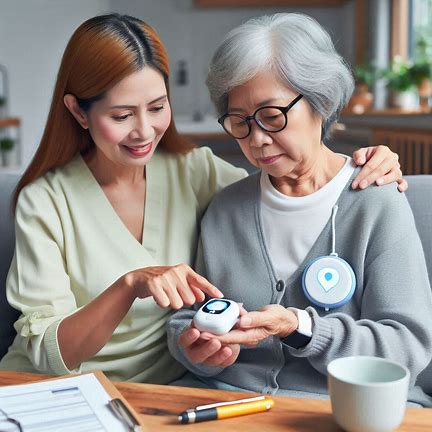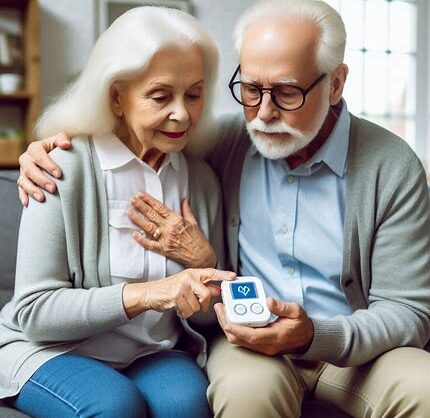Your Guide to the Best Safety Systems available today

Our mission is to help seniors (age 55+) and their families find peace of mind with the best medical alert devices. We offer unbiased, easy-to-understand guidance on personal emergency response systems (also called medical alert systems). This site is for older adults and their caregivers (often adult children) who want clear information and recommendations – not a hard sell. You’ll find expert reviews and answers to common questions so you can confidently choose the device that’s right for you.
- Who We Help: This information is tailored for seniors and their loved ones. Whether you’re researching for yourself or a parent, we explain medical alert options in simple, reassuring terms.
- Unbiased Guidance: We compare and explain top-rated alert systems and features (like fall detection, GPS, home base stations vs. mobile devices) so you can pick the best medical alert device without pressure.
- Peace of Mind: Emergency alert systems provide immediate help in an emergency, giving users and families confidence and security. As the NCOA (National Council on Aging) notes, the extra safety of a device “can give you peace of mind while helping you maintain your independence”. After all isn’t that what we all want as seniors?
Why Medical Alert Devices Matter

Medical alert devices can be life-saving tools for seniors living alone or at risk of falls. Falls are the leading cause of injury in adults 65+ – nearly 1 in 4 older adults fall each year, according to CDC.gov – and many of these seniors have to wait a long time for help. A wearable alert button or pendant connects you to emergency responders 24/7, so help is just a push away. The National Council on Aging and others emphasize that these systems increase safety and confidence.
Key reasons these devices matter include:
- Immediate Emergency Help: Most alert systems include a wearable button to press when you need help. Monitored systems connect you to a response center that can send emergency services or call a family member. This instant connection can be critical if a fall or medical event happens.
- Independence and Confidence: Alerts give seniors freedom to move around the home or even outside, knowing help is always within reach. Research by the senior list, finds that alert systems can “increase independence, safety, and peace of mind” for older adults. In practice, having an emergency button means not feeling trapped by fear of falling or being alone.
- Caregiver Support: Families (especially adult children) often worry about aging parents living alone. About 39% of adult children report they would likely get a medical alert system for their parents, even though only ~10% of seniors currently use one. We provide clear info for caregivers on how to talk about alerts and select devices, since nearly 40% of children plan to buy one (compared to just 6% of seniors getting it for themselves)
Choosing the Best Medical Alert Device

With many options on the market, choosing the best medical alert devices means considering your lifestyle and needs. Here are the main factors and types to think about:
- In-Home vs. Mobile: In-home systems use a base station (often plugged into the phone line or cellular) and work within a certain range (typically 300–1,000+ feet). They usually come with a wearable help button. Mobile (on-the-go) systems are portable units (pendants, bracelets, or watches) with cellular connection and GPS. They work outside the house (even in the yard or on walks). Think about where the user spends time: homebound users may prefer a simple base-unit system, while active seniors need a mobile option with GPS.
- Key Features: Look for 24/7 monitoring (staff available anytime), two-way speaker communication, and robust network coverage. Important add-ons include automatic fall detection (device senses a fall and calls for help) and GPS location tracking (vital if the user lives alone or goes out). NCOA notes that systems with fall detection, GPS, and round-the-clock monitoring “can increase your security and confidence”. Battery life also matters – most devices last 24+ hours on a charge, and some claim days of standby.
- Connectivity: Some home systems plug into a landline phone; others use a cellular network. If you choose cellular, ensure the carrier (e.g. AT&T or Verizon) has strong coverage at home. A cellular system often costs a bit more but means you don’t need a phone line. Ask if a service can send alerts to caregivers or via an app (some devices include companion apps to track location or battery status).
- Ease of Use: Most medical alert systems are designed for simple setup and use. Typically, you just plug in the base unit and wear the alert button. Many seniors find them intuitive – for example, one major provider (Lifeline) is known for easy voice prompts and large buttons. We highlight and heartily recommend devices that prioritize user-friendliness.
- Costs & Contracts: We explain pricing, so nothing catches you by surprise. Typical monthly fees range from $20–$40 depending on features (devices often require a 1–3 year monitoring contract). Your outline should note that while cost is a barrier for some (about 25% of seniors say it’s a concern), many providers offer equipment discounts or trial periods. We cover any activation fees, warranties, and how to cancel service if needed.
Resources and Next Steps
We’re here to guide you to the information you need. Navigate our site to find:
- In-Depth Reviews: Articles comparing leading devices and companies (Life Alert, Medical Guardian, Bay Alarm, etc.) in plain language. We break down pros/cons, so you see the features without marketing spin.
- How-To Guides: Easy guides on topics like “How medical alert systems work,” “Fall-proofing your home,” and “Getting started with an alert system.” For example, learn what happens when the button is pressed and how emergency dispatchers respond.
- Stories & Testimonials: Read about real seniors and caregivers who use alert devices. These stories show the practical benefits and answer questions like “How will I feel using a device every day?”
- FAQs: Quick answers to common concerns (privacy of devices, insurance coverage, when an alert is really needed, etc.).
Featured Content for Seniors and Caregivers
- Finding the Right Fit: Check our section on “Best Medical Alert Systems of 2025” or “Compare Home vs. Mobile Alert Devices”. We highlight devices suited for active seniors, full-time caregivers, or those on a budget.
- Support for Caregivers: Special articles on how adult children can help parents adopt safety devices without embarrassment. We offer tips on family conversations and choosing easy-to-use alerts.
- Peace of Mind: Remember, the goal is your confidence and safety. As experts note, the extra security of a medical alert device can “give you peace of mind” while letting seniors maintain independence. Click through our guides and reviews to find the best medical alert device for your situation, and enjoy the reassurance that help is just a button-press away.
Sources: We base our advice on authoritative health sources, testimonials and industry research. For example, the CDC reports over 14 million older Americans fall each year, and organizations like the National Council on Aging explain how alert systems work and support independence. Recent studies show only ~10% of seniors use these devices (despite many fall risks), so we’re committed to educating and empowering seniors and families with up-to-date facts and recommendations.
